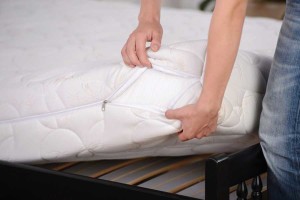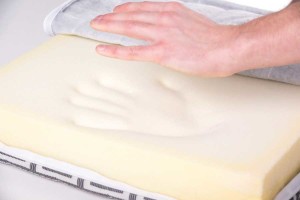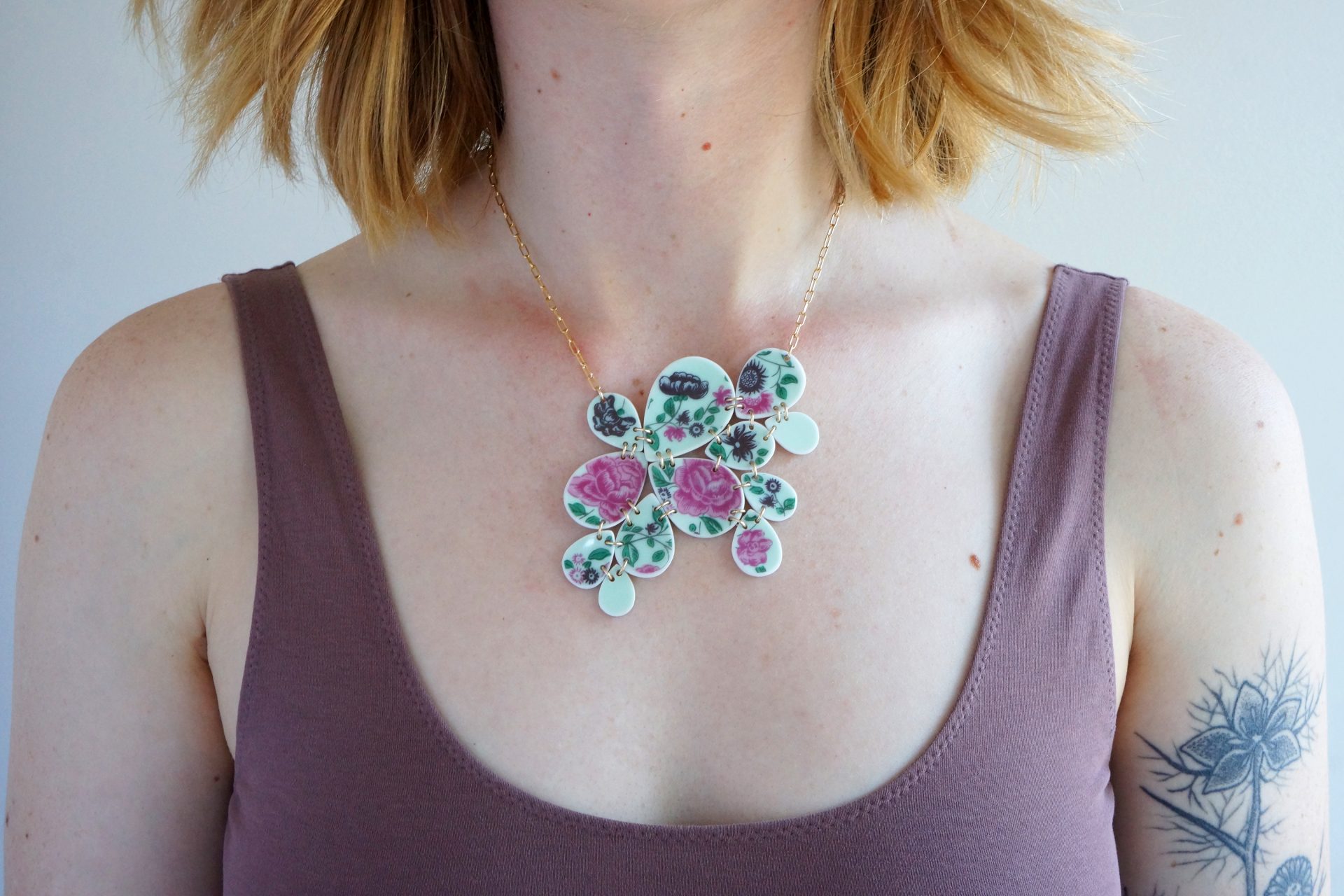A Look at Today’s Mattress Industry
27 Sep 2015
Mattress Matters
By Eli Wallace It only takes a few sleepless nights on a lumpy mattress before you’re begging for new bedding. Living with a bad mattress can lead to decreased productivity, grumpiness and even back problems. But the sheer number of options in a typical mattress store can make you want to lie down and take a nap, especially once you see the price tag! When it comes time to buy a new mattress, knowing why they’re so expensive can save you money and regret. First of all, mattresses have relatively inelastic demand, meaning that because they’re something everyone needs, people will figure out how to pay the sticker price, no matter how high. Add in a handful of companies controlling the industry, like Sealy, Simmons, Serta and Tempur-Pedic, which combined had a 65 percent share of the mattress market in 2011, and you have part of the overall picture.
“If you were to get a financial report from Mattress Firm or Tempur-Pedic, it’d say they only have a 40- to 50-percent profit margin,” says J.T. Marino, cofounder of the online mattress retailer Tuft & Needle. But, he adds, “It’s about understanding the hands a mattress goes through. It starts with the brand; if it costs $500 to manufacture, the manufacturer will sell it at 50-percent profit margin, so now it’s $1,000 wholesale to the store. The store adds their margin, making it $2,000. Often the store will double it again, in order to do those 50-percent-off sales; now it’s $4,000. So if you’re not buying during one of those great sales, you’re really getting it.”
“Buying, marking them up and reselling them—that’s all retailers across the board,” says David Coombe of Boulder’s Verlo Mattress Factory. Marketing and overhead, Marino notes, also add to the cost.
First of all, mattresses have relatively inelastic demand, meaning that because they’re something everyone needs, people will figure out how to pay the sticker price, no matter how high. Add in a handful of companies controlling the industry, like Sealy, Simmons, Serta and Tempur-Pedic, which combined had a 65 percent share of the mattress market in 2011, and you have part of the overall picture.
“If you were to get a financial report from Mattress Firm or Tempur-Pedic, it’d say they only have a 40- to 50-percent profit margin,” says J.T. Marino, cofounder of the online mattress retailer Tuft & Needle. But, he adds, “It’s about understanding the hands a mattress goes through. It starts with the brand; if it costs $500 to manufacture, the manufacturer will sell it at 50-percent profit margin, so now it’s $1,000 wholesale to the store. The store adds their margin, making it $2,000. Often the store will double it again, in order to do those 50-percent-off sales; now it’s $4,000. So if you’re not buying during one of those great sales, you’re really getting it.”
“Buying, marking them up and reselling them—that’s all retailers across the board,” says David Coombe of Boulder’s Verlo Mattress Factory. Marketing and overhead, Marino notes, also add to the cost.
Middleman Markups
Those middleman margins explain why retail stores expect customers to haggle over the price of the mattress, something many first-time buyers don’t know. Even if you can argue your way down a few hundred dollars, options like pocket coils, gel layers and the newest sleeping technology remain shockingly expensive. At the core of the issue is an imbalance in information, which tips the scales to the retailer’s advantage. Take comparison shopping, for instance. Because consumers can’t see minute differences between mattresses, like the number of coils or layers, which can vary slightly, manufacturers can market essentially the same mattress under different names. This makes it difficult for consumers to find the same model store to store. Then factor in over-the-top marketing efforts. “Some bells and whistles might be useful, but generally mattress companies are marketing companies,” Marino explains. “They go to trade shows and come up with the next thing they’re hoping to sell.” Minor examples of this are the decorative piping and shiny threads used to draw the consumer’s eye to the mattress—functionless features that get covered by a sheet once the bed comes home.Marketing Madness

Planned Obsolescence
For those wanting more leeway in choosing their mattress, custom manufacturers like Boulder’s Verlo Mattress Factory are worth checking out. “We’re not a retail store, we’re a factory store, so we cut out the middlemen,” says Coombe, adding that his company’s Longmont factory is open to visitors. Verlo’s prices vary based on the custom order, but can be as low as $599 for a double-sided queen. “We’re one of the few manufacturers of double-sided mattresses in Colorado. Twenty years ago, all mattresses were double-sided, and they lasted 10 to 15 years, depending on the quality. The major companies all went to single-sided ‘no-flip’ mattresses because it reduces material costs by 30 percent and wears out faster, meaning people buy more mattresses,” he says. Verlo’s foams are CertiPUR, which are certified flexible polyurethane foams. Along with other environmentally friendly attributes, CertiPUR is low in VOCs and made without mercury, lead and formaldehyde. While online mattresses “have a place if someone is looking for a mattress for a guest room,” Coombe says, “a mattress is more personal than a set of tires or a flat-screen TV. Comfort testing is necessary for someone to get the proper level of support and comfort. Although foam mattresses have become popular due to shipping options, they will never offer the same level of support or durability as a well-made conventional mattress.” And if a Verlo mattress doesn’t live up to your expectations, the factory will literally take your mattress back and rebuild it if it’s too firm or too soft when you get it.Too Good to Be True?
Josh Chudyk of Boulder’s locally owned Urban Mattress isn’t so sure about the numbers cited by Marino and Coombe. “That markup’s a little skewed,” he says. “The manufacturers probably only make 15 percent on a mattress between costs. Yes, there’s going to be markup along the way—that’s just economics. But from manufacturer to retailer, there’s no way they’re marking it up [as much as 50 percent].” He also says his part-soy–based foams are more of a 20- to 30-percent blend. As for prices, they vary widely based on the quality, workmanship and materials, Chudyk says. For instance, his Vi-Spring mattress “is made in England by hand, and it costs $20,000. It has thousands of hand-tied, handmade innersprings and uses materials like vicuña wool, cashmere and sheep’s wool. There’s a lot of labor involved. For something like latex, it’s a tough process. You have to take sap from a tree in Sri Lanka and ship it, and then rinse it seven times. But you can get an innerspring mattress—springs with poly foam on top—for $700.” He also points out the difference between buying from local versus corporate retailers. “Places like Mattress Firm often have contracts with the manufacturers. So Simmons will tell them, ‘You have to sell it at this price.’ If you’re more independent, like Urban Mattress, you can sell at what price you want.” (Mattress Firm declined to comment for this article.) As for marketing ploys and misinformation, Chudyk hopes the industry moves toward consumer education. “There’s a little of a used-car feeling with mattresses. People are scared they’re going to get ripped off.” Marketing ploys definitely exist, he says, but lots of mattress features have tangible benefits. “You want to actually lie on the bed and see what works for you. Having someone help you experience the difference between the many attributes and actually give you their expertise is an advantage of retail stores,” he says.
“Talking with someone who can match you with the right bed is important.” In Chudyk’s opinion, $2,000 to $3,000 mattresses have a definite benefit over inexpensive ones because he believes you’ll sleep better, and the mattress will be higher quality and last longer.
As for marketing ploys and misinformation, Chudyk hopes the industry moves toward consumer education. “There’s a little of a used-car feeling with mattresses. People are scared they’re going to get ripped off.” Marketing ploys definitely exist, he says, but lots of mattress features have tangible benefits. “You want to actually lie on the bed and see what works for you. Having someone help you experience the difference between the many attributes and actually give you their expertise is an advantage of retail stores,” he says.
“Talking with someone who can match you with the right bed is important.” In Chudyk’s opinion, $2,000 to $3,000 mattresses have a definite benefit over inexpensive ones because he believes you’ll sleep better, and the mattress will be higher quality and last longer.












